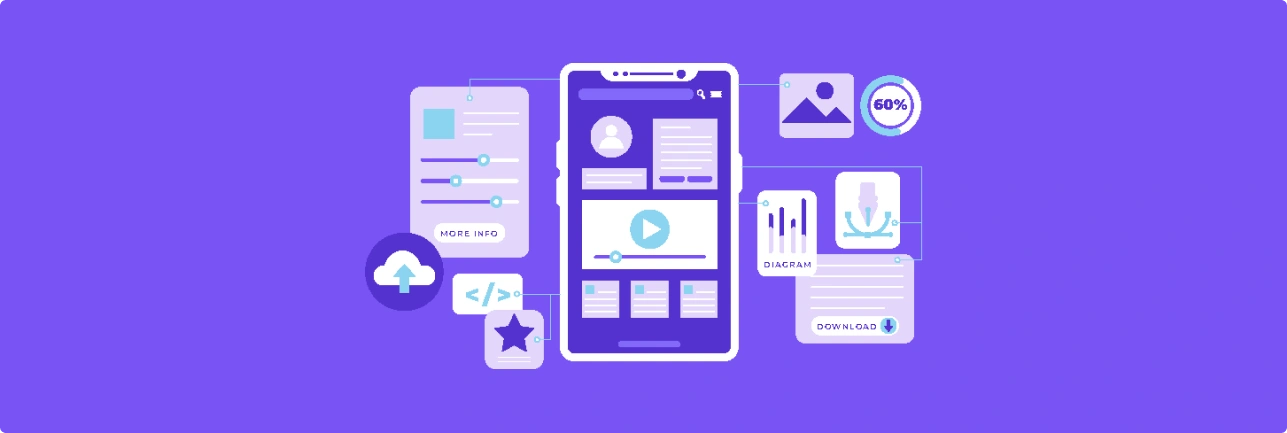Navigating the Process: Pro Tips for Seamless Android App Development
Posted By - Pony

Posted On - November 7, 2023

Having a mobile app for your business has become indispensable today. Among the two leading mobile platforms, Android and iOS, Android’s open-source nature and extensive user base make it a prime choice for businesses aiming to reach a broad audience. However, creating a successful Android application requires a strategic approach.
Learn about the approach by following the pro tips for seamless Android App Development Services that can significantly enhance your project’s chances of success.
Process Concerning Seamless Android App Development
The Foundation: Understanding Your Audience
Before you embark on your Android application development journey, it’s crucial to comprehend your target audience thoroughly. Who are they? What problems do they face? What features would be most beneficial to them? These are the questions you must answer before diving into development. Conduct thorough market research to gather insights that will guide your app’s design and functionality.
Concept to Reality: The Ideation Phase
Once you have a clear understanding of your audience, it’s time to brainstorm ideas for your Android application. Start with a concise and compelling concept that addresses your users’ needs. Make sure your concept is unique and adds value to their lives.
Design Matters: User-Centric Approach
The design of Android applications plays a pivotal role in user engagement and satisfaction. Adopt a user-centric approach when designing the user interface (UI) and user experience (UX). Prioritize intuitive navigation, attractive visuals, and smooth interactions. A well-designed app not only attracts users but also keeps them coming back.
Development Phase: Choose the Right Tools
When it comes to opting for Android Application Development Services, the choice of tools and technologies is critical. Opt for a reliable development framework and programming language such as Java or Kotlin. Additionally, consider using integrated development environments (IDEs) like Android Studio for efficient coding and debugging.
Thorough Testing: Ensuring Reliability
Testing is an integral part of Android app development. Before releasing your app to the public, make sure that your Android Application development services provider conducts rigorous testing to identify and fix any bugs or performance issues. User feedback during this phase is invaluable for making necessary improvements. Ensure that your app runs smoothly on various Android devices and operating system versions.
Optimization for Performance
To maintain user satisfaction, your Android application should be optimized for performance. Pay attention to factors such as app startup time, responsiveness, and efficient use of device resources. A well-optimized app not only provides a better user experience but also improves your app’s visibility on the Google Play Store.
Security and Privacy: Non-Negotiable
In today’s digital age, users prioritize the security and privacy of their data. Make sure your Android app complies with data protection regulations and follows best practices for security. Regularly update your app to patch vulnerabilities and protect user information.
Continuous Improvement: Post-Launch Strategy
Once your Android application is live, the work doesn’t end there. Monitor user feedback and analytics to identify areas for improvement. Regularly release updates with new features, bug fixes, and optimizations. This continuous improvement cycle demonstrates your commitment to providing a top-notch user experience.
Marketing and Promotion
Finally, to ensure the success of your Android application, invest in marketing and promotion efforts. Utilize various digital marketing channels, including social media, content marketing, and app store optimization (ASO).
Time for us to Conclude
Before leaving just remember that Android App Development Services are a complex but rewarding process. Before you plan to make an Android app understand your audience, ideate effectively, focus on user-centric design, check the right tools used by the company, and emphasize security and performance. Then only you can create a seamless Android application that resonates with users. Additionally, a robust post-launch strategy and effective marketing can help your app gain the visibility it deserves in the competitive app market.
Here are the 5 FAQ’s:
Why is understanding the target audience important in Android app development?
Understanding the target audience is crucial because it helps developers design an app that caters to the specific needs and preferences of the intended users. It ensures that the app’s features and functionalities align with user expectations, increasing the chances of success in the market.
Which programming languages are commonly used for Android app development?
Java and Kotlin are the most commonly used programming languages for Android app development. Both languages are supported by the Android platform, but Kotlin has gained popularity for its modern features and concise syntax.
How can I ensure the security and privacy of my Android app users’ data?
To ensure the security and privacy of user data, you should follow best practices for security, regularly update your app to patch vulnerabilities and comply with data protection regulations such as GDPR. Implement strong encryption, secure authentication methods, and data handling procedures to protect user information.
What is app store optimization (ASO), and why is it important for Android app success?
App Store Optimization (ASO) is the process of optimizing your app’s presence on app stores like Google Play. It involves using relevant keywords, creating compelling descriptions, and optimizing app visuals to increase visibility and downloads. ASO is essential because it helps your app stand out in a crowded marketplace and attracts more potential users.
Why is continuous improvement important for Android app success?
Continuous improvement is essential because user expectations and technology evolve over time. Regularly releasing updates with new features, bug fixes, and optimizations demonstrates your commitment to providing a top-notch user experience. It keeps your app competitive, retains existing users, and attracts new ones by showing that you are actively addressing their needs and concerns.












